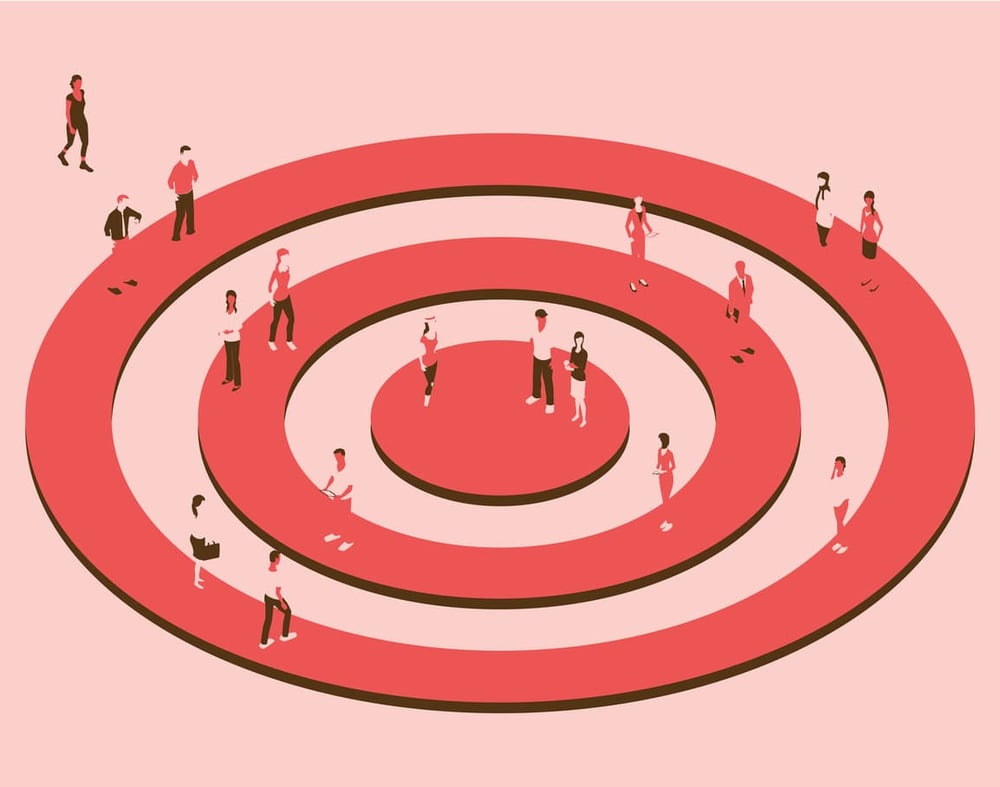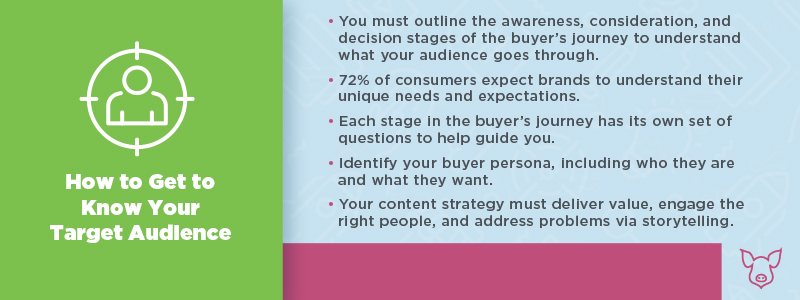Question Marketing: Can You Answer the Questions of Your Best-Qualified Leads?
How do you move qualified leads past their objections? A different approach opens up the opportunity to market with questions. Let's explore.


One of the biggest mistakes marketers make is failing to fully account for their target audience’s real-life wants and needs. We’re dealing with real people, after all – not just data signals.
A crucial piece of advice for any content marketing campaign is to know your target audience, but you also need to take that guidance a step further. You must improve each piece of content so it is relevant, valuable, and tells a compelling story that your customers want to keep reading.
This guide will walk through how to know your target audience by defining the buyer’s journey and buyer persona, focusing on their needs, and developing an audience-focused content strategy.
The buyer’s journey is potentially the most important framework in inbound marketing. Every sale your brand makes is the result of a buyer completing the journey, and every new instance of churn is a result of a buyer prematurely ending it.
The most well-known iteration of the buyer’s journey is a three-stage map that includes:
Of course, the journey never really ends if you want to retain customers. Converting that sales funnel into a flywheel turns happy buyers into promoters by attracting, engaging, and delighting them. That journey can take many routes, so be sure to anticipate all the roads buyers could take to reach you.

Sellers don’t pilot the buyer’s journey anymore (if they ever did!). Buyers are in the driver’s seat, so it’s not enough to build a linear journey map that brings your lead from point A to point B to point C.
Instead, you have to consider that your customers may want to circle from point B back to point A to review some information, go back to point B to think about their options, and maybe then finally head to point C and make a decision about your product or service.
The point is your buyers are too selective to be shoehorned into a linear buyer’s journey that lacks real definition. They have to be picky because no one else will recognize their pain points and anticipate the solution for them, right?
Hint: That’s where you come in.
These days, it’s not enough to have a killer solution to a big problem. You must instead show buyers that you’re inside their heads and tackling their problems from a place of understanding.
According to the Salesforce State of the Connected Customer report:

The only way to understand a buyer is to ask the right questions and think critically about the answers from their perspective. The buyer’s journey is 70% over before your sales team even hears from a prospect. If you don’t define the stages based on their needs, they might bounce before ever landing on your product!
Ask yourself these questions to define the buyer’s journey at each stage.
Not all iterations of the buyer’s journey include retention, but it’s a critical fourth stage that’s also represented on the flywheel as delight.
You see, it’s five times more expensive to attract a new customer than to retaining an existing one. Simply boosting retention by 5% increases profits between 25% and 95%!
Ask yourself these questions to guide your buyers from decision to retention:
All of this information leads to identifying your buyer persona, which goes hand-in-hand with their journey. Telling your brand’s story through the buyer’s journey requires some intensive thought about:
Digging deeper to identify who these people are and what they most desire will help you both map their journey and tailor your content to be exactly what they’re looking for. These two crucial components – the buyer’s journey and the buyer persona – help you align your brand voice and content plan. It all starts with delivering value to that target persona.

Your content will be meaningless to your target audience unless you deliver value. High-quality writing and lots of content aren’t enough on their own. You need to factor in how you’re addressing the audience pain points you defined.
Here are a few tips to do it right in your content strategy:
Ok, it sounds easier than it is. You may think that your audience cares about a topic, but what value does each piece of content bring them? It’s not enough to simply talk about something related to their interests. You need to:
Put another way: Make sure you’re telling people what they want to know, not giving them information you want them to hear. Make it all about them. And make sure it’s great content.
Every brand wants to have a lot of followers, but your dreams of going viral can’t drive your content. What’s much more valuable to you is attracting the right followers, and that means your strategy needs to focus on being helpful rather than more popular.
Why? Isn’t the goal of content marketing to bring in as many leads as possible?
Not exactly. Think of it this way: Viral videos require short-lived interest and shares from the masses – not just one specific audience – to be truly viral. If “viral” is your goal, your content isn’t going to be targeting your audience but all audiences. That makes it much less valuable to the people you need to reach the most.
Instead, focus on staying relevant to your targets who will benefit from what you have to say. This shows them you’re authentic and not just trying to get more clicks or page views. You want to truly give them something they can use. That’s how to connect more meaningfully with your target audience.
Another important point is that your content should never try to sell something directly. People go online to find answers and solutions, not necessarily products and services. They want to know that a brand understands their problems. This is the most important thing to them when they’re looking for something. By addressing their problem with your content, you are showing them that you’re listening.
This is easy to do when you harness storytelling. Telling a good story ignites emotions. It requires empathy for others and showing that you know what it’s like to be them. Step one is establishing that you know what they care about and what their problems are. This helps you connect a story with your authority on the topic. Show people why they should listen to you before ever mentioning your product. This sets a strong foundation for better relationships that sustain your brand.

Now, the big takeaway here is that your content strategy should be all about delivering value, which requires that you know your target audience. This takes not only identifying who that audience is made of, but also tailoring your content to tell stories and address their biggest pain points.
Easier said than done, right? When you need a little help, leave it to the content experts at ContentBacon. We help you create a better content marketing strategy that includes valuable content specifically for your target audience.
Contact ContentBacon to learn about our content subscription services.
How do you move qualified leads past their objections? A different approach opens up the opportunity to market with questions. Let's explore.
What is the buyer’s journey and why is it important for inbound marketing? Buyers go through a process much like a journey that takes them from...
Align your CRM with the buyer’s journey to streamline sales, increase conversions, and build stronger customer relationships.